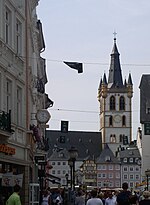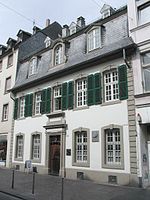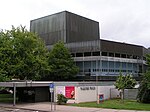Trier Imperial Baths
Ancient Roman bathsAncient Roman building and structure stubsAncient Roman buildings and structures in GermanyBuildings and structures in TrierHistory of Trier ... and 1 more
World Heritage Sites in Germany

The Trier Imperial Baths (German: Kaiserthermen) are a large Roman bath complex in Trier, Germany. The complex was constructed in the early 4th century AD, during the reign of Constantine I. During that time, Trier was a major imperial hub, being a primary residence for Constantine's son Crispus. The baths were built around hot water pools reaching 40°C. Underneath the complex was a network of underground passageways used by the staff which can still be seen today, along with the remains of the sewer system. However, the baths were never completed and were made into a castle in the Middle Ages.
Excerpt from the Wikipedia article Trier Imperial Baths (License: CC BY-SA 3.0, Authors, Images).Trier Imperial Baths
Weberbach, Trier Altstadt (Mitte-Gartenfeld)
Geographical coordinates (GPS) Address External links Nearby Places Show on map
Geographical coordinates (GPS)
| Latitude | Longitude |
|---|---|
| N 49.749729 ° | E 6.642259 ° |
Address
Kaiserthermen
Weberbach
54290 Trier, Altstadt (Mitte-Gartenfeld)
Rhineland-Palatinate, Germany
Open on Google Maps










